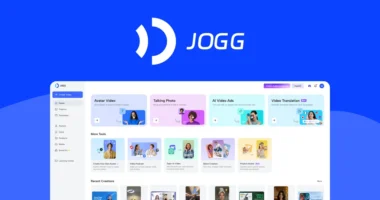Modern email marketing software combines automation, personalization, and analytics to help businesses reach customers effectively. Leading platforms like Mailchimp offer free starter plans, while premium options like Klaviyo provide advanced e-commerce features. Key capabilities include customizable templates, A/B testing, list segmentation, and integration with CRM systems. With an average ROI of $36 per dollar spent, these tools deliver measurable results. Exploring platform options reveals which features best match specific business needs.
Quick Overview
- Most email marketing platforms offer customizable templates and drag-and-drop editors for creating professional-looking campaigns without technical expertise.
- Mailchimp provides a free plan for up to 500 contacts, while Brevo allows 100,000 subscribers, making them cost-effective options.
- Advanced automation features help businesses create targeted campaigns based on user behavior and customer segmentation.
- E-commerce focused platforms like Klaviyo and Omnisend specialize in cart abandonment campaigns and seamless integration with online stores.
- Email marketing delivers exceptional ROI, averaging $36 for every dollar spent, with built-in analytics tracking campaign performance.
Understanding Modern Email Marketing Software

Modern email marketing software represents an extensive suite of digital tools that have revolutionized how businesses connect with their audiences. These platforms combine powerful features like multi-channel integration, customizable templates, and AI-driven automation to deliver targeted communications at scale.
Today’s email marketing solutions excel in three key areas: integration, automation, and analytics. They seamlessly connect with CRMs, social media platforms, and e-commerce systems while offering robust automation capabilities for tasks like welcome sequences and abandoned cart reminders. Advanced analytics tools track performance metrics and support data-driven decisions through A/B testing and real-time monitoring. Leading platforms like Insider and HubSpot now offer extensive personalization capabilities for creating highly targeted campaigns.
The software also prioritizes security and compliance, incorporating built-in features to protect customer data and guarantee adherence to regulations like GDPR and CAN-SPAM, making it easier for businesses to maintain professional standards.
Core Features That Drive Campaign Success
Building upon the foundation of modern software capabilities, successful email marketing campaigns rely on a core set of powerful features that maximize impact and drive results. Today’s email marketing platforms excel in five essential areas: advanced automation, list management, personalization, testing, and design tools. Leading platforms like Omnisend and Klaviyo have become essential tools for Shopify stores seeking robust marketing solutions.
These features work together seamlessly to create highly effective campaigns. Automation handles targeted message delivery based on user actions, while sophisticated list segmentation certifies messages reach the right audiences. Dynamic personalization tailors content to individual recipients, and in-depth A/B testing tools optimize performance through data-driven decisions. Modern design capabilities, including drag-and-drop editors and responsive templates, make it easy to create professional-looking emails that engage readers across all devices. Together, these core features enable marketers to deliver relevant, timely, and compelling email campaigns. The integration of send time optimization capabilities ensures messages reach recipients when they’re most likely to engage, significantly improving click-through rates and conversions.
Finding the Right Platform for Your Budget

Selecting the right email marketing platform requires careful consideration of both budget constraints and essential features. Today’s market offers solutions for every price point, from free plans for small lists to scalable options for growing businesses. The key is finding software that balances cost with functionality. For example, MailerLite provides unlimited emails starting at $10/month for 500 subscribers.
- Consider platforms with transparent pricing models that align with subscriber count, like Zoho Campaigns offering plans starting at $13 for 2,500 subscribers.
- Evaluate included features in basic tiers, ensuring essential tools like templates and basic automation are available.
- Look for scalability options that won’t break the bank as your subscriber list grows.
- Focus on ROI-driving capabilities such as A/B testing and customer segmentation, which are increasingly available in budget-friendly plans.
Many affordable platforms now include user-friendly interfaces and adequate support, making them viable options for small businesses.
Top Free Tools and Their Limitations
While paid email marketing platforms offer extensive features, several robust free tools provide an excellent starting point for businesses with modest needs. Popular options include Mailchimp, which offers 500 contacts and 1,000 monthly emails, and Brevo, allowing up to 100,000 subscribers with a 9,000 monthly email limit. Free email marketing tools deliver an impressive ROI of 3600%, generating $36 for every dollar invested.
These free tools come with notable restrictions. Users face email and contact caps, limited access to advanced features like A/B testing and detailed analytics, and mandatory platform branding in email footers. Customer support is typically basic, often limited to email assistance. Additionally, some platforms impose daily sending limits – for example, Brevo caps daily sends at 300 emails.
Despite these limitations, free tools like MailerLite and Moosend offer valuable features including drag-and-drop builders, automation workflows, and landing page templates.
Best Solutions for Online Retailers

Modern online retailers face unique challenges when choosing email marketing software, requiring solutions that seamlessly blend eCommerce functionality with powerful communication tools.
Several platforms stand out for their robust features and proven track records in the retail space.
- Klaviyo leads the pack with its thorough integration capabilities, real-time analytics, and sophisticated automation workflows tailored for eCommerce businesses.
- Omnisend offers specialized retail features, including cart abandonment campaigns and pre-built templates designed specifically for online stores. All this functionality starts at just $16 monthly, making it an accessible choice for retailers of all sizes.
- ActiveCampaign provides advanced automation and behavior tracking, helping retailers create personalized customer journeys.
- Brevo combines affordability with powerful features like multichannel marketing support and an intuitive drag-and-drop interface, making it ideal for growing online retailers.
Latest Innovations in Email Marketing Technology
As email marketing continues to evolve, groundbreaking technological innovations are reshaping how businesses connect with their audiences. AI-driven personalization now enables hyper-targeted content delivery, while interactive elements like AMP technology allow customers to take action directly within emails. Popular platforms like Omnisend integration enables seamless connectivity with major ecommerce platforms.
Privacy-centered approaches have become paramount, with businesses implementing robust data protection measures and emphasizing transparent data collection practices. Meanwhile, cross-channel integration creates seamless customer journeys by connecting email campaigns with social media, SMS, and mobile apps.
Advanced analytics and machine learning capabilities are transforming campaign optimization, offering real-time insights and predictive modeling. Features like dynamic subject lines, automated A/B testing, and AI-generated content help marketers craft more engaging emails. With an average ROI of $36 for every dollar spent on email marketing campaigns, businesses continue to prioritize this channel for customer engagement. These innovations, combined with sophisticated segmentation tools, are setting new standards for email marketing effectiveness.
Frequently Asked Questions
How Long Does It Take to See Results From Email Marketing Campaigns?
Results from email marketing campaigns typically vary based on campaign objectives and target audience. Initial engagement metrics like open rates become visible within 1-2 weeks, while relationship-building campaigns show results in 3-6 weeks.
Conversion-focused campaigns generally need 2-3 months to demonstrate clear outcomes. Seasonal campaigns can deliver faster results, often within a week.
Factors affecting timeline include list quality, segmentation effectiveness, and industry type, with B2B typically requiring longer than B2C.
Can I Transfer My Email Subscriber List Between Different Platforms?
Like moving to a new house, transferring email subscriber lists between platforms is completely doable. Most email marketing platforms support list migration through CSV file exports and imports.
The process typically involves:
- Exporting the list from the current platform
- Formatting data to match new platform requirements
- Importing subscribers to the new service
- Verifying data accuracy
It’s essential to maintain subscriber consent and compliance during transfer, and many platforms offer migration assistance for seamless changes.
What Happens to Undelivered Emails in My Marketing Campaigns?
Undelivered marketing emails typically face one of several outcomes. Hard bounces (invalid addresses) and soft bounces (temporary issues) are logged in the email platform’s reporting system.
Spam-flagged messages get blocked by recipient servers, while failed authentication emails may be auto-deleted. Most email platforms provide detailed bounce reports and delivery analytics.
To minimize undelivered emails, marketers should regularly clean their lists, maintain proper authentication protocols, and follow email best practices.
How Often Should I Clean My Email Subscriber List?
The frequency of email list cleaning depends on list size and campaign activity. For large, active lists, monthly cleaning is recommended to maintain high deliverability rates.
Medium-sized businesses should aim for quarterly cleaning, while smaller operations can manage with biannual maintenance.
The key indicator for immediate cleaning is when bounce rates exceed 2%. Regular cleaning helps maintain sender reputation, improve engagement metrics, and guarantee that marketing budgets are spent on reaching active subscribers.
Do Email Marketing Platforms Provide Legal Compliance Templates for Different Countries?
Yes, many email marketing platforms provide legal compliance templates for different countries. These templates typically include pre-designed elements that align with major regulations like GDPR (Europe), CAN-SPAM (US), and CASL (Canada).
They often feature built-in components such as:
- Proper opt-in mechanisms
- Unsubscribe options
- Privacy notices
- Cookie consent banners
However, businesses should note that these templates are guidelines rather than guaranteed legal protection, and consulting legal experts for specific needs is recommended.
Conclusion
Like a lighthouse guiding ships to shore, the right email marketing software illuminates the path to customer engagement. Today’s platforms offer sophisticated features while remaining accessible to businesses of all sizes. Whether choosing a free solution or investing in premium tools, success lies in selecting software that aligns with specific goals and growth plans. As email marketing evolves, companies that leverage these digital compasses will navigate toward stronger customer relationships and increased revenue.








